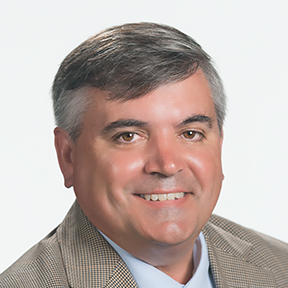
When visiting senior living and nursing facilities, potential residents and their families rely on their senses of sight and smell, and they make decisions accordingly. But even the warmest staff smiles can’t erase poorly maintained restrooms, chemical smells in corridors, or matted and soiled carpets.
In other words, first impressions matter. This puts the onus on senior living facilities to present a fresh, clean and welcoming environment by investing in sanitation protocols beyond daily janitorial regimens. The development of unparalleled curb appeal — and hopefully a reduction in vacant beds — requires long-term comprehensive planning to ensure that no critical hygiene components fly under the radar.
Cleanliness fosters resident, employee and visitor health
Beyond the marketing advantages of running a sparkling clean senior living center or skilled nursing care facility, a clean building means a healthier one. In an age of airborne diseases and contagious viruses, older adults with naturally reduced immune systems deserve safe living quarters, free from the threat of avoidable bacteria and germs. Their loved ones agree.
No one wants a family member — susceptible to respiratory illnesses, viruses and colds — to reside in a facility plagued by poor indoor air quality. Breathing in pollutants from pet dander to volatile organic compounds leaves residents at greater likelihood to develop health problems, including cardiovascular events and lung conditions. At the same time, having a “sick” building can ruin a facility’s reputation and profitability.
On the flip side, a long-term care facility that follows a proactive approach to environmental hygiene can expect fewer outbreaks (not to mention healthier staff members, residents and visitors). It all starts by mapping out a hygiene schedule that addresses a few key areas:
1. Air circulation and HVAC systems: Imagine a long-term care facility with a bustling coffee cafe on the first floor. The aroma of warm drinks and fresh pastries wafts through the air. Unfortunately, those odors can be detected on the upper floors of the unit, too. While residents and personnel might not complain, this breach could indicate an air circulation issue. And that would mean airborne illnesses and disease-causing allergens could travel through the building unabated.
HVAC systems cannot be overlooked as a first defense against everything from itchy, watery eyes to asthma attacks. Not only should filters be changed routinely, but air circulation rates should also be monitored. If sudden odors arise, they deserve a check-up from the facilities crew members. Simply being cognizant of air flow and filtering can make a huge difference in the ambiance and cleanliness of a building.
2. Entry mats and floor transition spaces: Most senior living spaces boast a variety of flooring types. From a design perspective, this offers visual interest and promotes safer traveling from room to room. However, having tons of floor transitions necessitates specific cleaning procedures. For example, chemicals used on hard floors can leach onto adjacent textiles, causing rapid re-soiling that may damage carpet fibers. The same can be true of the abrasive debris tracked into a facility. Finally, and perhaps most importantly, entry mats can also reduce slips and falls.
Though it isn’t realistic to stop all debris from getting indoors, an effective entry system can remove most soil, sand, and mud as people walk into the building. Regular service by custodial staff and cleaning vendors is also essential, because bacteria and germs can live on floors for days. For instance, carpeted rooms usually require daily attention with a high-filtration vacuum. Other spaces should get equally appropriate care based on traffic patterns.
3. Bathrooms and food service areas: Food service areas and bathrooms are magnets for wetness, odors, mold, and discoloration. Daily wipe-ups and emergency cleans aren’t enough to prevent buildup of bacteria and ground-in filth over time. When grout becomes dark and spotted, it looks unappealing and can harbor unpleasant odors.
Visitors to nursing facilities will no doubt use the restroom (and perhaps peek into kitchenettes and cafeterias). At the first inkling of mildew or stained surfaces, they’ll question the center’s commitment to hygiene. Therefore, proper restoration of all visible and hidden areas must take priority. Just as senior living leaders promote hand washing and door-handle sanitization, they should be diligent about promoting rigorous deep cleaning of well-trafficked touchpoints.
4. Areas that already look clean: Looks can definitely deceive. Rooms that appear tidy might harbor dust mites and unwiped surfaces, leading to odd odors. For that reason, leaders at skilled nursing facilities should preempt the development of “invisible” soiling. With a planned maintenance schedule based on traffic and historic debris buildup, building managers have the ability to stop the spread of disease-carrying germs.
Of course, cleaning staff may balk at the notion of scouring places that seem to be sanitized. What they must understand is that, just because a countertop appears clean, it could still harbor plenty of bacteria. It’s better to constantly wipe down regularly used (yet seemingly sparkling) surfaces than to court disaster in the form of a fast-spreading viral infection.
Making a positive lasting impression is a must-do in the competitive senior living industry. Beyond hiring talented people and designing a leading-edge facility, focusing on cleaning and maintenance helps centers differentiate their features and fill beds.
Stephen Lewis is the technical director at milliCare, where he manages all equipment, methods and products for the floor and textile cleaning company. Stephen, a certified senior carpet inspector and an IICRC master textile cleaner, has proudly served milliCare for more than 30 years.



